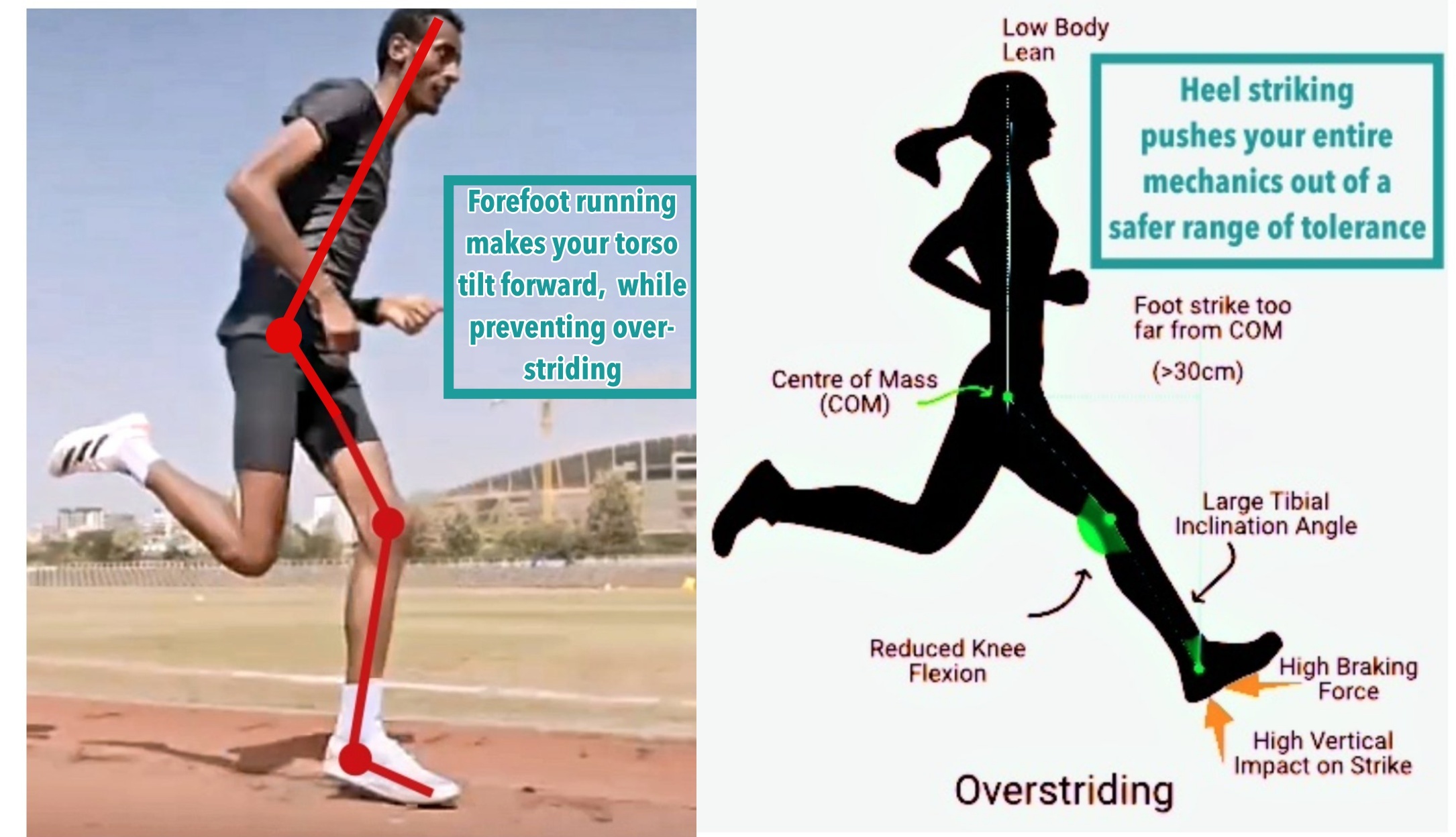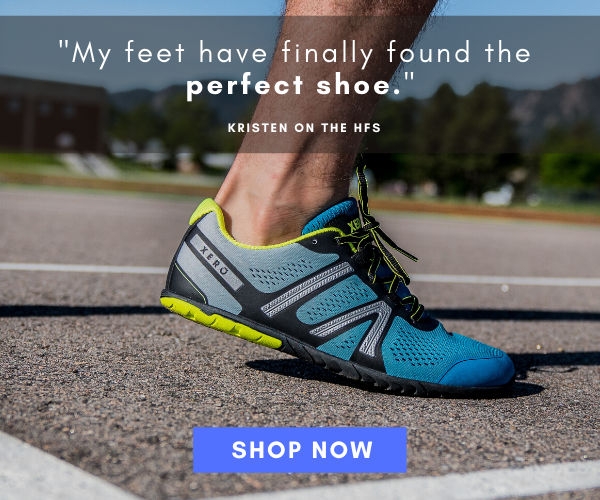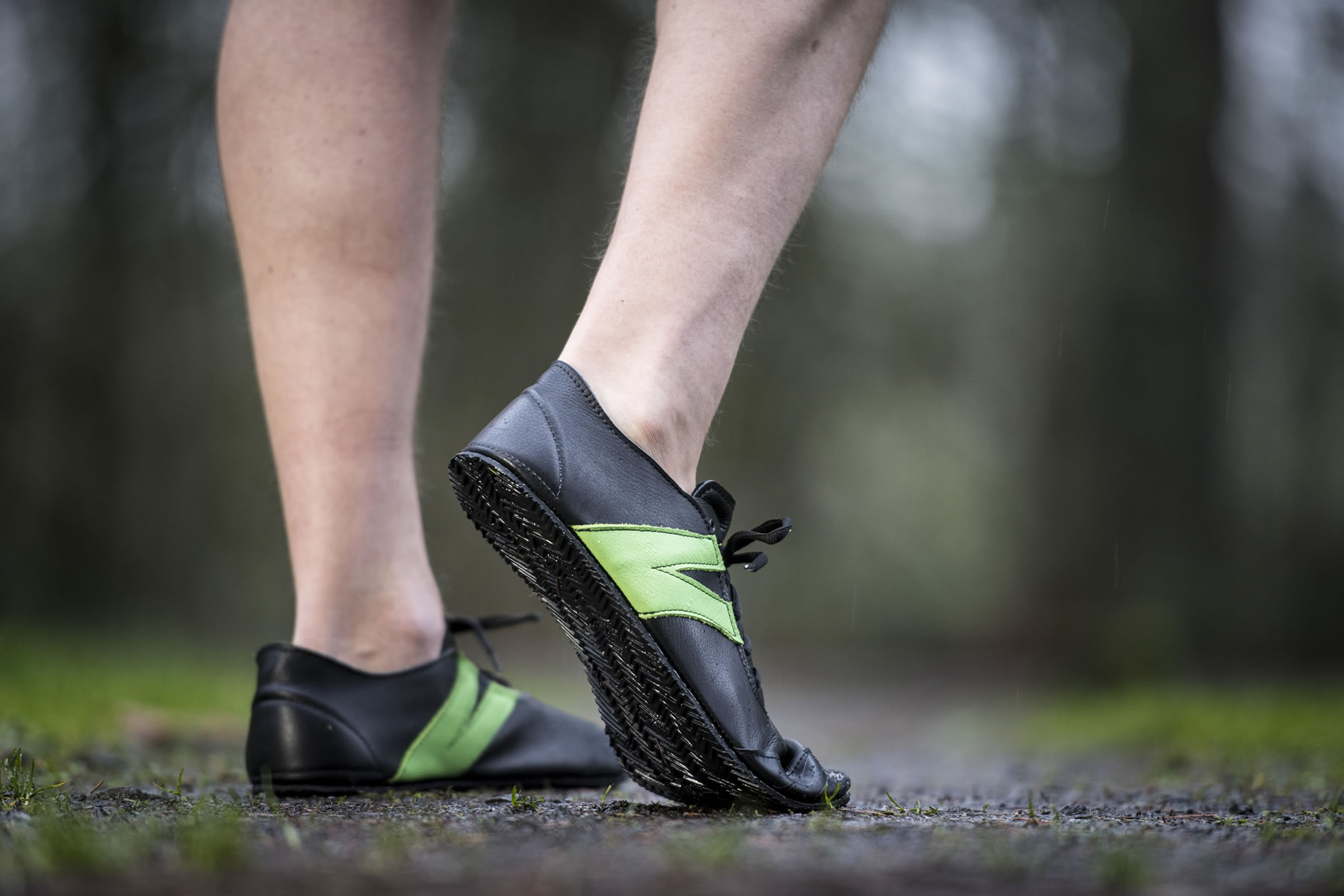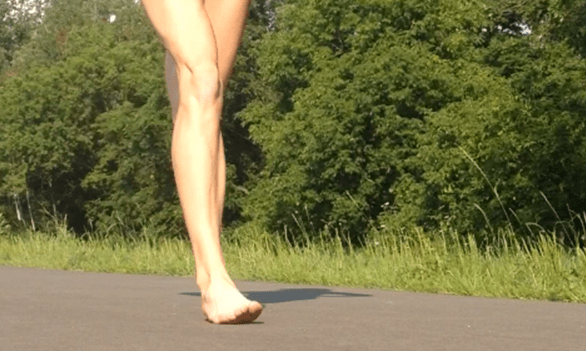Any time you try a new major workout, like switching your running form from a heel strike to a forefoot strike running form, you may experience tender calves because the calves are used differently in forefoot running. The good news is, rest assure that given enough time and patience, your calves will fully adapt to the new running condition. But, why exactly does this pain arise in the first place?
The calves are really under-utilized in heel strike running because the knees do most of the mechanical work, which they aren’t supposed to do. This is why ‘runners knee’ is most common in heel strike runners, but the dreaded condition is literally cured in forefoot running, as shown below:


Case in point, compelling research (references below article) has shown that the elastic mechanisms of the lower leg that are indirectly controlled by the calf musculature are under-developed in heel strike runners.
- Researchers suspect that a heel strike running style ‘de-conditions’ the calves which is why related reports found heel strike runners experienced significant calf fatigued when the forefoot running style was utilized.
Bottom line, experts speculate that there’s something about heel strike running that sharply limits the functional properties of the calf musculature, while forefoot running seems to make the most functional, practical use of the calves. This is why some heel strike runners who switched to forefoot running report calf pain, but this pain is considered merely adaptive pain, meaning the calves are just adapting to their new normal, which they will, depending on your fitness level. Once adapted, the calf pain vanishes and wont return, unless you’re a mis-using the forefoot running technique. Click here to watch my YouTube video on how to engage a proper forefoot strike and why!
One mechanical mistake you may be doing as a forefoot runner with calf pain is that you may be using your foot too much to propel the body forward to initiate flight. Doing this was found to over-load the calves. The best way around this problem is to make sure you lean slightly forward, which was found to remove the foot passively via firing of the hamstrings, which in turn, effectively unburdens the calves, according to Dr. Romanov of Pose Running.
- Forefoot running requires well-conditioned calves because they control and stabilize the ankle joint at touchdown. And, the calves in forefoot running control ankle dorsiflexion, too. This is why doing some calf strengthening exercises will help you avoid calf pain when switching from heel strike to forefoot strike running.
Furthermore, the calves role in forefoot running is to provide balance control, helping lock the leg into a stable position, where elastic energy storage is optimized in the Achilles tendon, which in turn, reduces work done by the surrounding leg muscles.
So, if your calves are sore after running forefoot for the first few times, especially if you have been heel striking for many years prior, your calves just need time to adjust and adapt to a new running condition!
It’s the same as lifting weights when you have never weight lifted before. Your arms will feel very tight, stiff, sore and hard to move the next day. The same effect is taking place within the calf musculature when forefoot running is first experienced.
Always remember that the pain is developmental strengthening, and not indicative of an injury. This is where patience and belief in your ability as a forefoot runner is important. Be patient, your calves WILL get better!
Need more convincing that heel strike running is the WRONG way to run? Here are over 30 study-backed reason heel strike running is not the functional, proper way to run, and forefoot running is!
If you’d like, you can support Run Forefoot and help keep it going by making a donation in any amount of your choosing:

Or, you can support Run Forefoot by shopping at the BEST Barefoot Shoe Brands, and be sure to bookmark these links 🙂
Saguaro: https://www.saguaro.com/?ref=9bVA8fEkmDvB-I
Vibram FiveFingers: https://www.anrdoezrs.net/click-7600968-11372648
Vivobarefoot: https://amzn.to/3vycQOY
Be Lenka: https://www.dpbolvw.net/click-7600968-14330828
Xero Shoes: https://xeroshoes.com/go/Run_Forefoot
Iguaneye: https://www.iguaneye.com/?ref=8tfXVc92
Soft Star Shoes: https://shrsl.com/3mp1b
Wilding Shoes: https://bit.ly/3lIygQP
References:
Williams DS., McClay, IS and Manal, KT. Lower extremity mechanics in runners with a converted forefoot strike pattern. J Appl Biomech, 2000;16:210-8.

Bretta Riches
BSc Neurobiology; MSc Biomechanics candidate, ultra minimalist runner & founder of RunForefoot. I was a heel striker, always injured. I was inspired by the great Tirunesh Dibaba to try forefoot running. Now, I'm injury free. This is why I launched Run Forefoot, to advocate the health & performance benefits of forefoot running and to raise awareness on the dangers of heel striking, because the world needs to know.
Latest posts by Bretta Riches (see all)
- Can You Run In Barefoot Shoes? Yes, But DON’T Heel Strike! - 21/07/2024
- Why Cushioned Running Shoes Are Really Bad for Your Feet - 19/07/2024
- Do Cushioned Running Shoes Cause Injuries? - 17/07/2024


Thanks for this great article and all the tips. I have been running on vibrams for many years now but have been challenged with long recovery times after each run. I often have to wait over a week for my calves to fully recover. You mentioned passive use of calf muscles. I wonder if passive means not sensing any muscle use and just bouncing, or maintaining some flex but just not pushing off. Do you know?